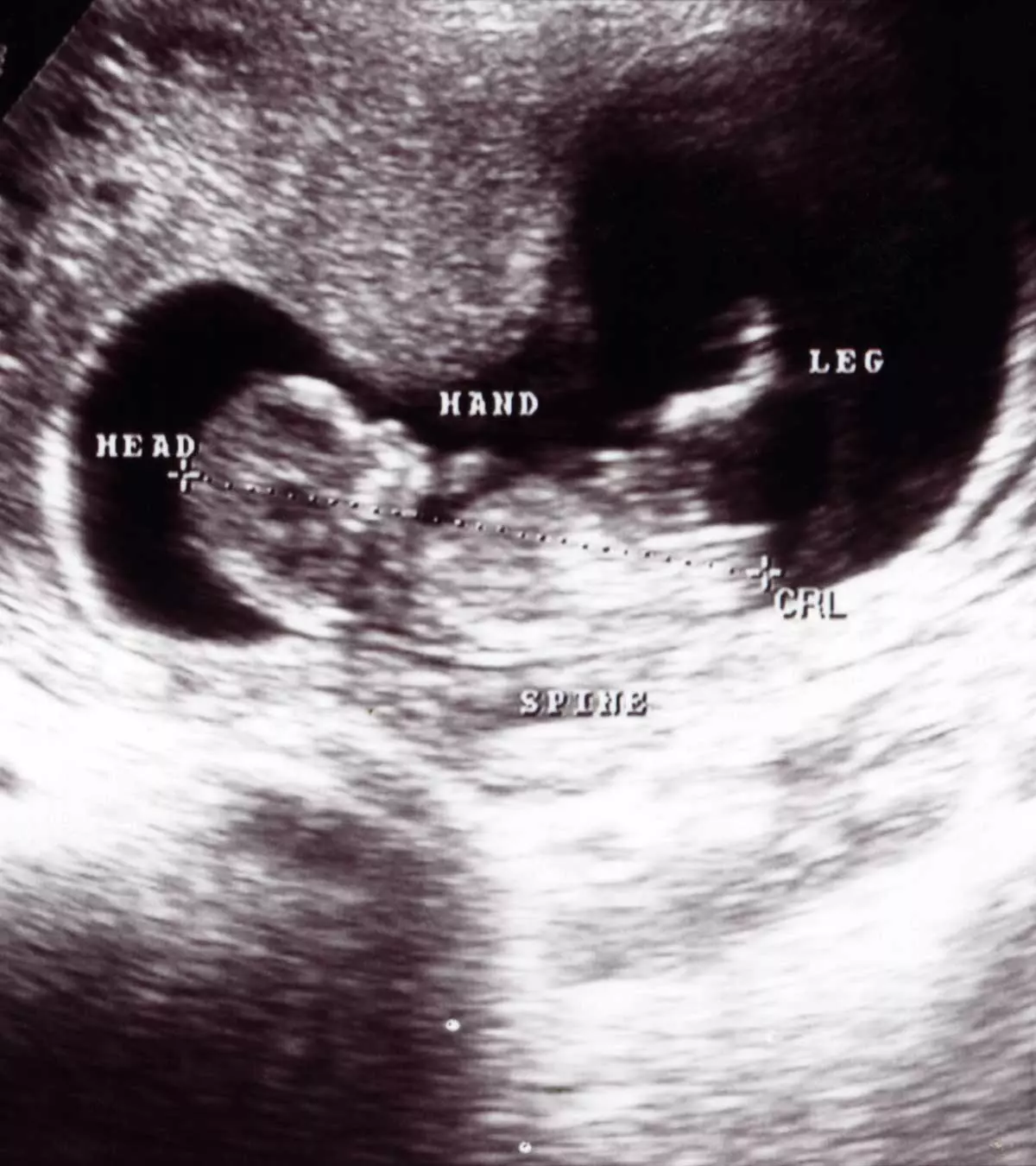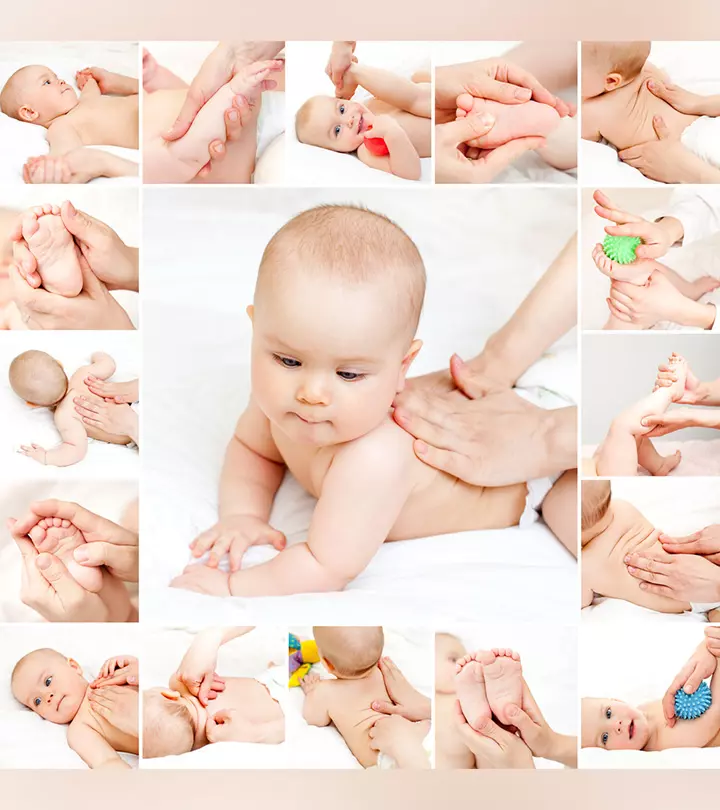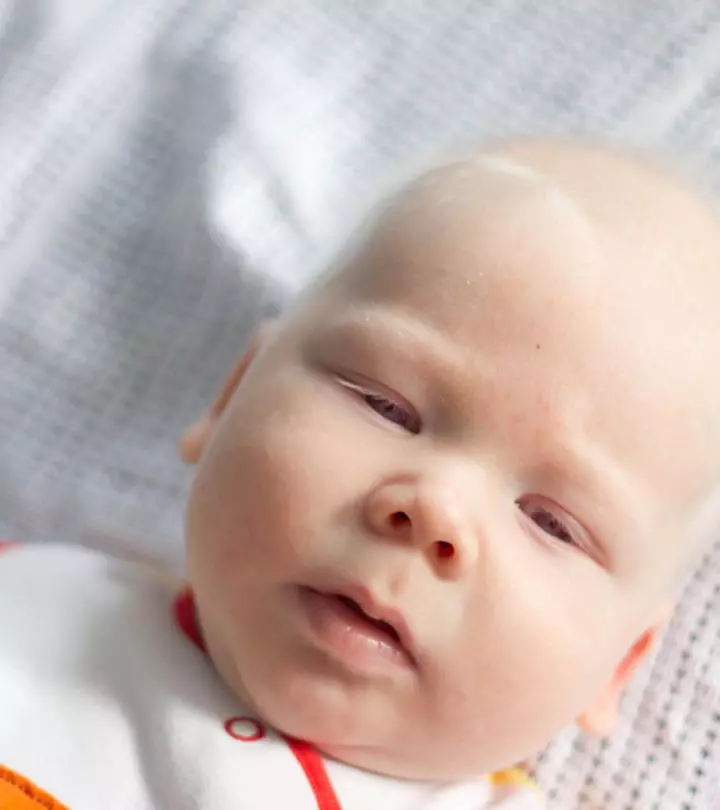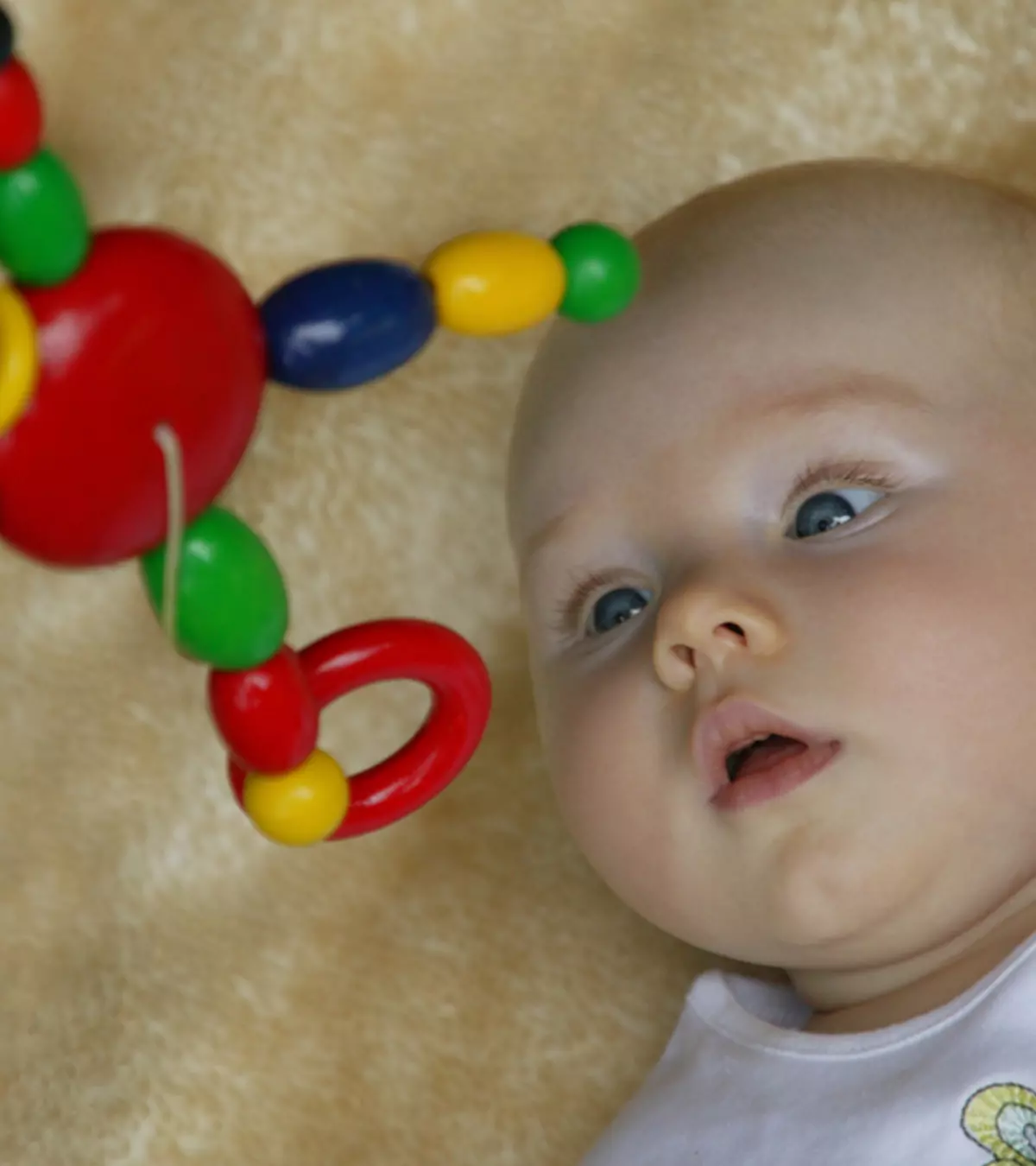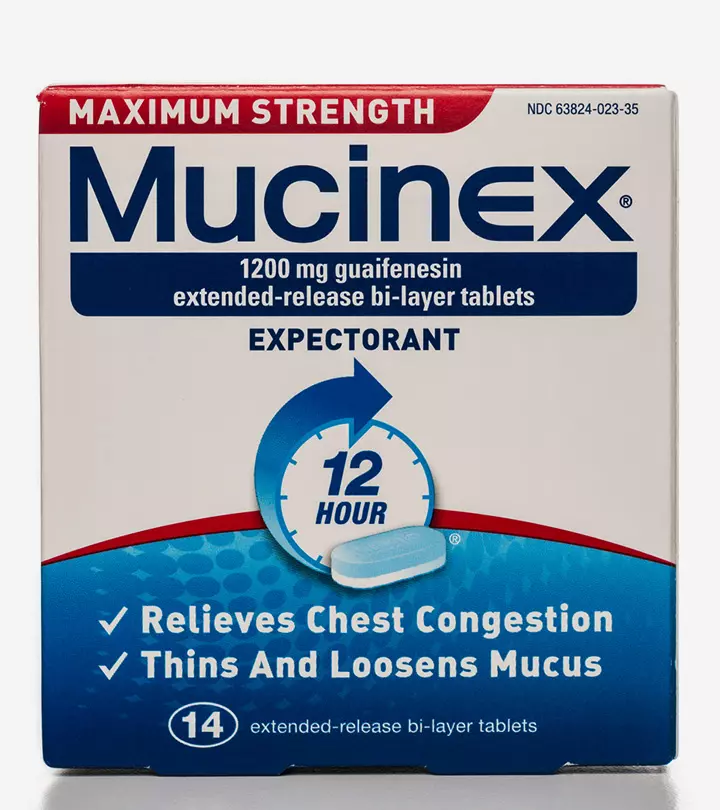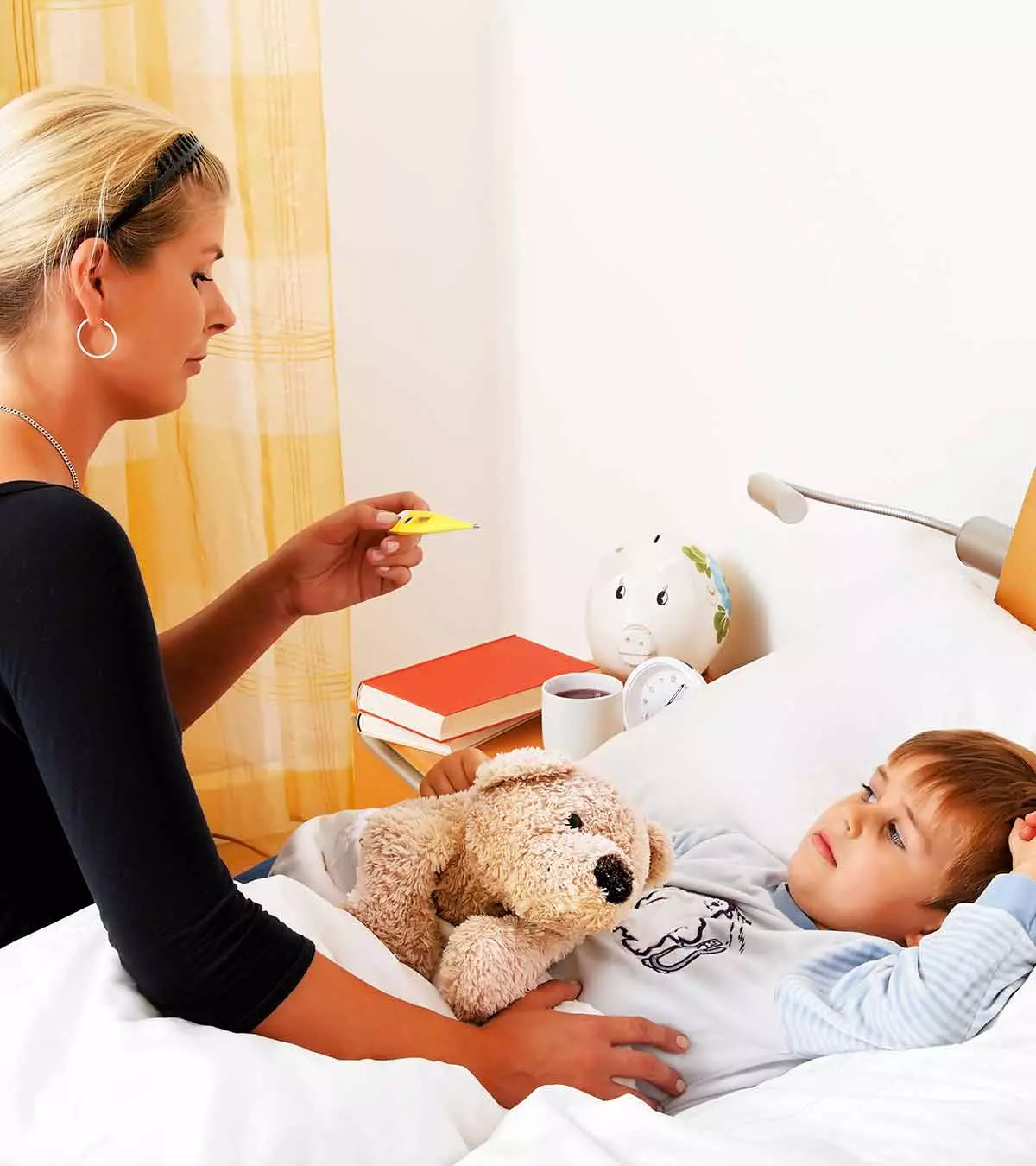
Image: ShutterStock
Typhoid in babies and toddlers can be associated with non-specific and variable symptoms. The infection is also called enteric fever, or typhoid fever, caused by bacteria through contaminated water and food sources. Although it is rare in babies, it can be life-threatening if untreated (1). According to a study by the World Health Organization, about 1,10,000 people succumb to typhoid annually across the globe. The incidence of typhoid is less in economically developed countries. However, it is a significant cause of morbidityiThe incidence or prevalence of an illness within a population and mortalityiA measure of the incidence of death in a population caused due to a specific disease in infants and toddlers in developing nations.
Read on to know more about the causes, signs, diagnosis, treatment, and prevention of typhoid fever in babies and toddlers.
Key Pointers
- Salmonella Typhi causes typhoid, a bacterial infection that can be life-threatening if untreated.
- Symptoms of typhoid include fever, fatigue, coated tongue, rose-colored spots on the skin, stomach pain, vomiting, loose stools, and sweating.
- Diagnosis involves a blood test, stool analysis, and antibody test.
- Antibiotics are used to treat typhoid in babies and toddlers.
- Prevention includes avoiding contaminated food and water, maintaining proper hygiene, and vaccination.
Causes Of Typhoid In Babies And Toddlers
Typhoid fever is caused by bacterium Salmonella typhi. Babies and toddlers can get bacteria from the following sources (2).
- Contaminated food: It can be contaminated by the person, who prepares food without washing hands. Unwashed fruits, vegetables, uncooked shellfish, milk, and milk products typically get contaminated with typhoid bacteria.
- Drinks: Fruit juices and other drinks handled by people having the infection may cause the disease.
- Water: Water contaminated by sewage containing the typhoid bacteria.
- Contact with bird feces: Salmonella typhi lives in the gut of birds such as pigeons or chickens without causing them disease, but human contact with such feces may cause typhoid.
Typhoid is not transmitted to the baby from the mother who has the infection. However, touching toys or baby’s hands without washing hands may lead to transmission of typhoid when babies keep toys or hands in their mouth (3).
 Do remember
Do rememberSymptoms Of Typhoid In Babies And Toddlers
It may take one to two weeks after consuming contaminated food or drink to develop the symptoms of typhoid fever. It can be mild or severe symptoms, which often last up to four weeks or more. The following are some common symptoms (4).
- Fever that rises gradually to 39°C to 40°C (102°F to 104°F)
- Tiredness
- Abdominal pain
- Coated tongue

The fever in typhoid infection can last more than three days, and may follow a pattern where it gradually increases during the day until night and drops by the morning
. Along with fever, the child may also feel initially fatigued, progressing to high fever and other symptoms (21). The rose color rashes usually appear after a week, mostly on the chest or abdomen, and stay for three to four days.
What Are The Stages Of Typhoid Fever?
Clinical presentation of typhoid can occur in four stages. Each stage may last for a week. However, it is not always necessary that typhoid fever follows all the stages. The various stages of typhoid are (5):
- First stage: Body temperature starts to increase and antibodies are negative.
- Second stage: Typhoid antibodyiDefensive proteins produced by the immune system in response to foreign invaders such as bacteria and viruses tests are positive. It is characterized by the presence of high fever, neurological manifestation, and rashes.
- Third stage: It is the period when complications may occur.
- Fourth stage: Recovery period where fever subsides.
Some people may become the carriers of salmonella bacteria after infection, even if they don’t have the symptoms of typhoid. An infected person can spread disease from the first week of illness until recovery. However, a person who does not follow a proper treatment for typhoid can spread the infection to others for several weeks and months (6).
What Are The Complications Of Typhoid?
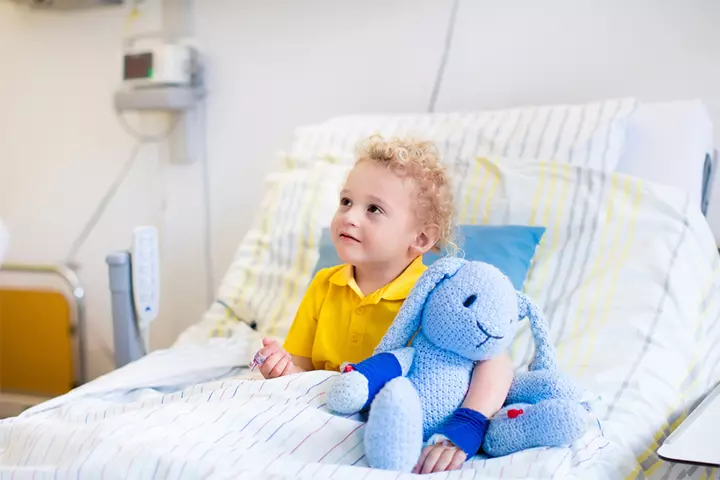
If typhoid is left untreated, it may result in complications. Untreated typhoid can be life-threatening in babies and toddlers. It is recommended to seek immediate medical attention if your baby is ill with typhoid.
Complications may include (7):
- Bleeding of the stomach and intestines
- Bowel perforation (Intestinal perforation)
- Shock
- Confusion
- BronchitisiAn infection in the airways that causes them to become inflamed and irritated
- Blood poisoning
- ComaiA state of being in a deep and prolonged state of unconsciousness, usually due to a medical ailment
- MeningitisiInflammation of the protective layers and fluid surrounding the brain and spinal cord
- Severe dehydration
 Research finds
Research findsWhen To Seek Medical Attention?
It is recommended to contact your doctor if your baby has symptoms of typhoid fever. It is advised to take your baby or toddler to the nearest hospital at the earliest if they have:
- Persistent vomiting
- Diarrhea
- Swollen tummy
- Fever lasting more than three days
Typhoid fever in babies and toddlers may also cause gastrointestinal infection requiring medical attention. Your doctor may start immediate treatment with antibiotics and also provide intravenous fluids to prevent dehydration as required (8).
Diagnosis Of Typhoid In Babies And Toddlers
The diagnosis of typhoid can be difficult in babies and toddlers. The pediatrician may ask the history of illness and look for signs of typhoid.
- The doctor will perform a physical examination to determine the presence of a slower heartbeat, swollen liver, and a swollen spleen.
- They may order blood tests and stool analysis to confirm typhoid fever. Blood culture is a standard test to confirm typhoid fever, and it can be positive in the first stage of the disease itself.
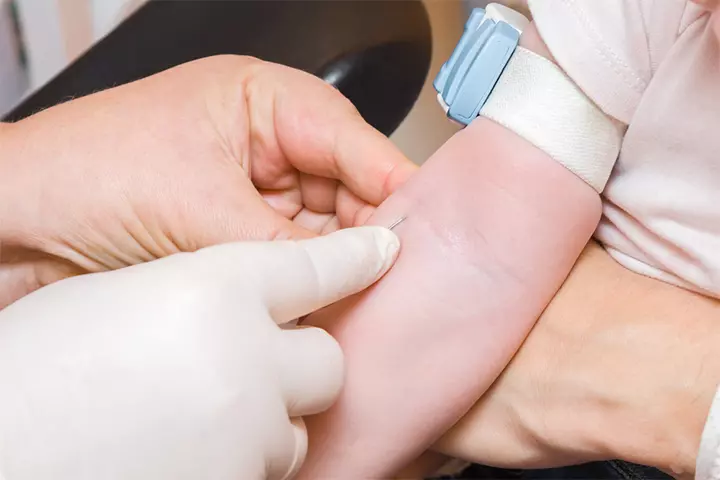
- Tests for typhoid antibodies such as Typhidot or Widal test can be ordered in the later stages of illness.
- The doctor might even ask for a complete blood count and other tests to rule out infections such as malaria, pneumonia, or dysentery (9)(10).
Treatment Of Typhoid In Babies And Toddlers
It may begin before the blood culture results. The treatment methods include the following(11) (12).
- The doctor may prescribe antibiotics for one or two weeks. Usually, fluoroquinolone such as ciprofloxacin is prescribed if you are not in a resistant zone.
- Cephalosporin such as ceftriaxone or cefotaxime is prescribed in the case of resistance to fluoroquinolones.
- Your doctor may recommend hospitalization if the baby is severely ill, dehydrated, and requires intravenous medications, fluids, and nutrients. However, many children can be cared for at home during recovery.
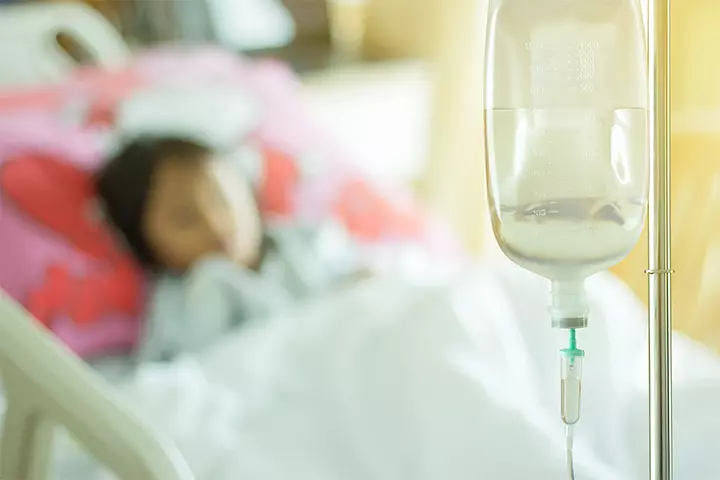
It is important to complete the prescribed course of antibiotics, even if your baby feels well after a few days. Do not treat your child with antibiotics, without a doctor’s prescription. Your doctor will prescribe the required antibiotic and dosage based on age, weight, and health status of your baby.
Home Remedies For Typhoid In Babies And Toddlers
Together with the prescribed antibiotic treatment, the following home treatments may help your baby or toddler recover from typhoid infection.
- Give a lot of fluids to cope with fluid loss from fever, vomiting, and diarrhea.
- Give oral rehydration solution (ORS) as per the pediatrician’s recommendation.
- Make sure that the baby is eating nutritious food.
- Breastfeed on regular intervals as much as required, if the baby is breastfed.
- Give frequent small meals to maintain energy level and aid proper digestion.
- Make sure that your baby is getting plenty of rest.
- Keep your baby clean.Wipe them with a wet towel if you do not want to give a bath.
- You may give cold compresses with a wet towel to reduce the temperature.
Healthy homemade soups, porridge, well-cooked eggs, steamed vegetables, fruits such as apples and bananas can help maintain your baby’s energy level if they are fed on solid food.
How To Prevent Typhoid In Babies And Toddlers?

Vaccination is the best way to prevent typhoid in babies and toddlers. The following types of typhoid vaccines are available (13) (14).
- Typhoid conjugate vaccine (TCV)
- Ty21a (live vaccine given by mouth)
- Vi capsular polysaccharide vaccine (ViPS) (injectable vaccine)
The World Health Organization recommends typhoid vaccination for all children in endemic areas, for those who are at high risk, or during the outbreaks of typhoid. Some countries with few cases of typhoid fever, recommend typhoid vaccines, if you are traveling to the endemic areas.
TCV vaccine can be given to babies older than six months at any private or public health centres and hospitals. Some types of typhoid vaccines may require booster doses during childhood. It is important to follow your pediatrician’s recommendations for your baby’s vaccinations (15).
Though vaccines prevent typhoid fever, the following hygiene practice may protect your baby from contracting the disease (11)(16):
- Use clean water for drinking and preparing food. You may use a water filter or boil the water.
- Wash fruits and vegetables in clean water before eating.
- Try not to give outside food to babies, especially uncooked.
- Practice hand hygiene before eating, before preparing baby foods, after changing baby diapers, and after using toilets.
Frequently Asked Questions
1. Can a two-year-old get typhoid?
Yes, young children are at greater risk of contracting typhoid fever than adults (more so in Asian, African and Pacific countries) (17).
2. What should babies and toddlers avoid eating in typhoid?
Avoid giving fruits and vegetables such as berries and lettuce that are difficult to peel. Instead, you may give fruits such as avocados and oranges. To be extra safe, you may avoid raw foods completely (18).
3. How can parents help prevent the spread of typhoid fever to other children?
Parents can help prevent the spread of typhoid fever to other children by ensuring proper hand hygiene, practicing safe food and water handling, maintaining a clean environment, promoting vaccination, and keeping sick children isolated until they recover and are no longer contagious (18).
4. How can parents prevent typhoid fever in their babies and toddlers when traveling to high-risk areas?
When traveling to high-risk areas, parents may prevent typhoid fever in their babies and toddlers by ensuring they get the typhoid vaccine, practicing good hygiene, consuming safe food and water, and keeping hand hygiene before meals and after using the toilet (19).
It is important to understand typhoid symptoms in babies and toddlers to prevent complications. If you or your family members have been diagnosed with typhoid or have recently visited a typhoid endemic area, take adequate precautions to prevent the spread of infection. Most home remedies, when paired with proper diagnosis and treatment, cure typhoid. It is also advisable to consult your physician and vaccinate your child against typhoid. Although a severe illness, typhoid is easily preventable, and with the right care, your child will be healthy in no time.
Infographic: Prevention Of Typhoid In Babies And Toddlers
Prevention is always better than cure, especially in the case of babies. You may follow specific measures to protect them from typhoid. Mentioned in the below infographic are some crucial steps to prevent typhoid in babies and toddlers. Read on! Illustration: Momjunction Design Team
Illustration: Typhoid In Babies And Toddlers: Causes Symptoms And Treatment
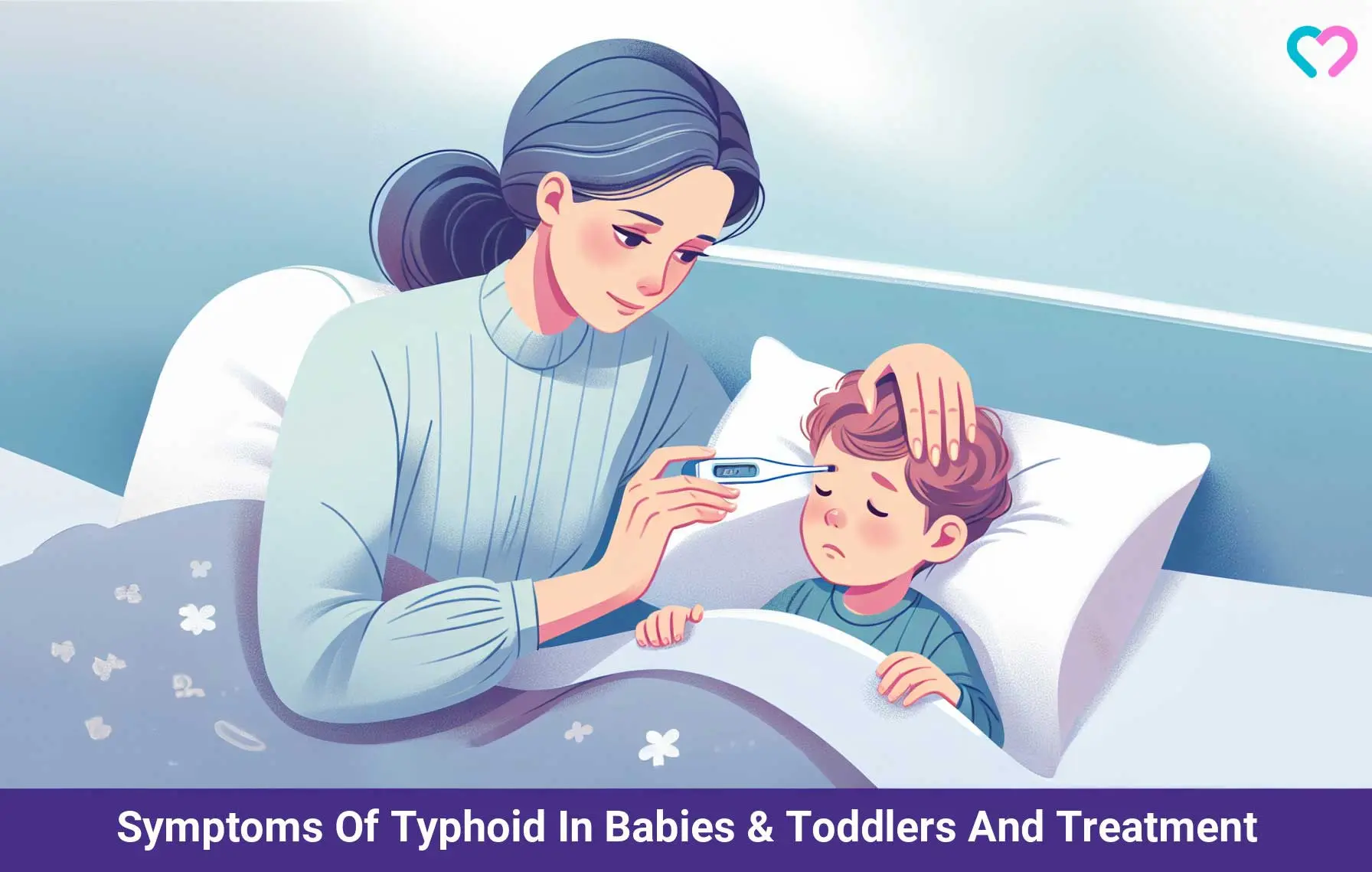
Image: Dall·E/MomJunction Design Team
Refer to this video for information about the causes, symptoms, treatment and preventative measures that you can use for treatinf typhoid in your little one.
References
1. About Typhoid Fever and Paratyphoid Fever; The Centers for Disease Control and Prevention
2. Causes: Typhoid fever; NHS UK
3.Guidelines for the diagnosis, management, and prevention of typhoid fever; The World Health Organization
4. Symptoms of Typhoid Fever and Paratyphoid Fever; Centers for Disease Control and Prevention
5. Michael Walsh,Typhoid Fever; Infection landscapes
6. Travel-Related Infectious Diseases:Typhoid fever and paratyphoid fever; Centers for Disease Control and Prevention
7. Complications: Typhoid fever; NHS UK
8. Typhoid fever; Johns Hopkins Medicine
9. Sonja J. Olsen, et al.; Evaluation of Rapid Diagnostic Tests for Typhoid Fever; The United States National Library of Medicine
10. Buddha Basnyat et. al.; Enteric fever; BMJ
11. Typhoid; World Health Organization
12. Treatment: Typhoid fever; NHS UK
13. International travel and health:Safety of typhoid conjugate vaccine; WHO
14. Immunization, Vaccines and Biologicals: Typhoid fever; World Health Organization
15. Essential medicines and health products:WHO recommends use of first typhoid conjugate vaccine; WHO
16. Preventing Typhoid Fever and Paratyphoid Fever; Centers for Disease Control and Prevention
17. Typhoid Fever; The Paediatric Society of New Zealand and Starship Foundation
18. Typhoid Fever; KidsHealth.
19. Typhoid Fever; Centers for Disease Control and Prevention
20. P G Palacios Malmaceda et.al; Typhoid fever in children under 2 years of age; NCBI
21. Typhoid Fever; Cleveland Clinic
Community Experiences
Join the conversation and become a part of our nurturing community! Share your stories, experiences, and insights to connect with fellow parents.
Read full bio of Dr. Miguel Ángel Guagnelli Martínez
Read full bio of Dr Bisny T. Joseph
Read full bio of Rohit Garoo
Read full bio of Shinta Liz Sunny





